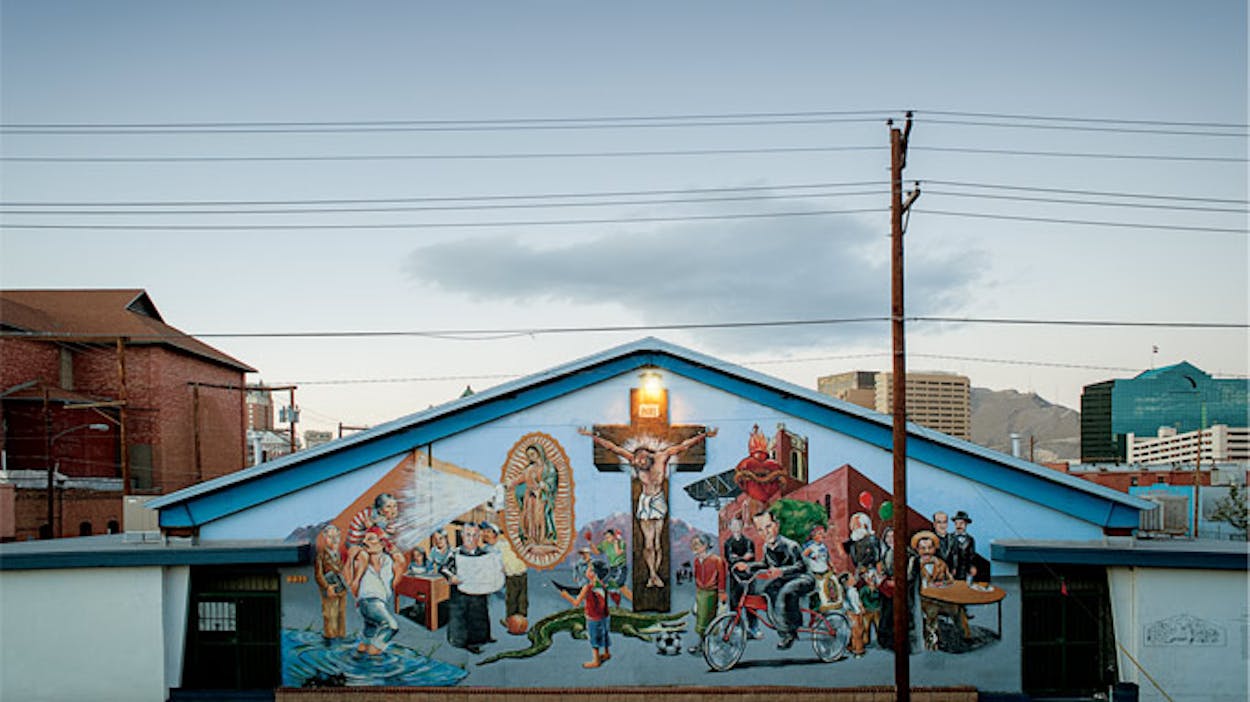Segundo Barrio, with its turn-of-the-century tenement buildings and dozens of brightly colored murals, is one of the most historic neighborhoods in the country. As the first community that immigrants encounter after crossing the Rio Grande from Juárez, it is known as the Ellis Island of the border, and over the years it has played a role in the Mexican Revolution, the zoot-suit pachuco counterculture, and the Chicano civil rights movement. A mural celebrating this history, designed by El Paso artist Francisco Delgado and painted in 2007 with the help of students from Bowie High School, can be found on the outside of the gymnasium at Sacred Heart Catholic Church. It depicts well-known residents of the barrio past and present (including Pancho Villa, who sits in the corner before a plate of enchiladas and a double order of Chico’s tacos) and, instead of the Statue of Liberty, shows the Virgin Mary welcoming newcomers from across the river with a flashlight and a towel.
While the church has long been a spiritual anchor for the neighborhood, its gym has served as a forum for cultural and political activism. On September 1, 1972, it was the gathering place for Reies López Tijerina, Rodolfo “Corky” Gonzáles, José Ángel Gutiérrez, and other leaders of the Raza Unida party, who held their first national convention at the El Paso County Coliseum. Many members of that convention met in El Paso last year to commemorate the fortieth anniversary of their struggle to create a third national party and to show that Latinos are a political force that cannot be ignored.







